The Future of Digital Art: The Rise of NFT Art Marketplaces
“In 2021, a friend of mine bought an NFT for $5000. Today, it barely costs $15”. The difference is impressive.” Twitter abounds with similar stories of “success”, where users, caught up in the peak of NFT hype, purchased these tokens anticipating further growth. However, after soaring to incredible heights, the NFT market experienced a sharp collapse.
NFT, an abbreviation for non-fungible token, is defined as a unique digital certificate, registered in a blockchain, that is used to record ownership of an asset such as an artwork or a collectible.
“NFT” was heralded as 2021’s “Word of the Year” by Collins Dictionary, underscoring the explosive popularity of this digital phenomenon. How did it even become possible?
This recognition came at the peak of NFTs revolutionizing the art world, epitomized by high-profile sales like Beeple’s digital artwork “Everydays: The First 5000 Days,” which fetched an astonishing $69 million at Christie’s.
Generally, the NFT market experienced a wild ride in the past three years. In 2021, it exploded with an estimated total sales volume of approximately $41 billion, fueled by excitement around art, collectibles, and play-to-earn games. 2022 saw a significant boom, exceeding $100 billion thanks to continued hype and expansion into music, sports, and metaverse projects.
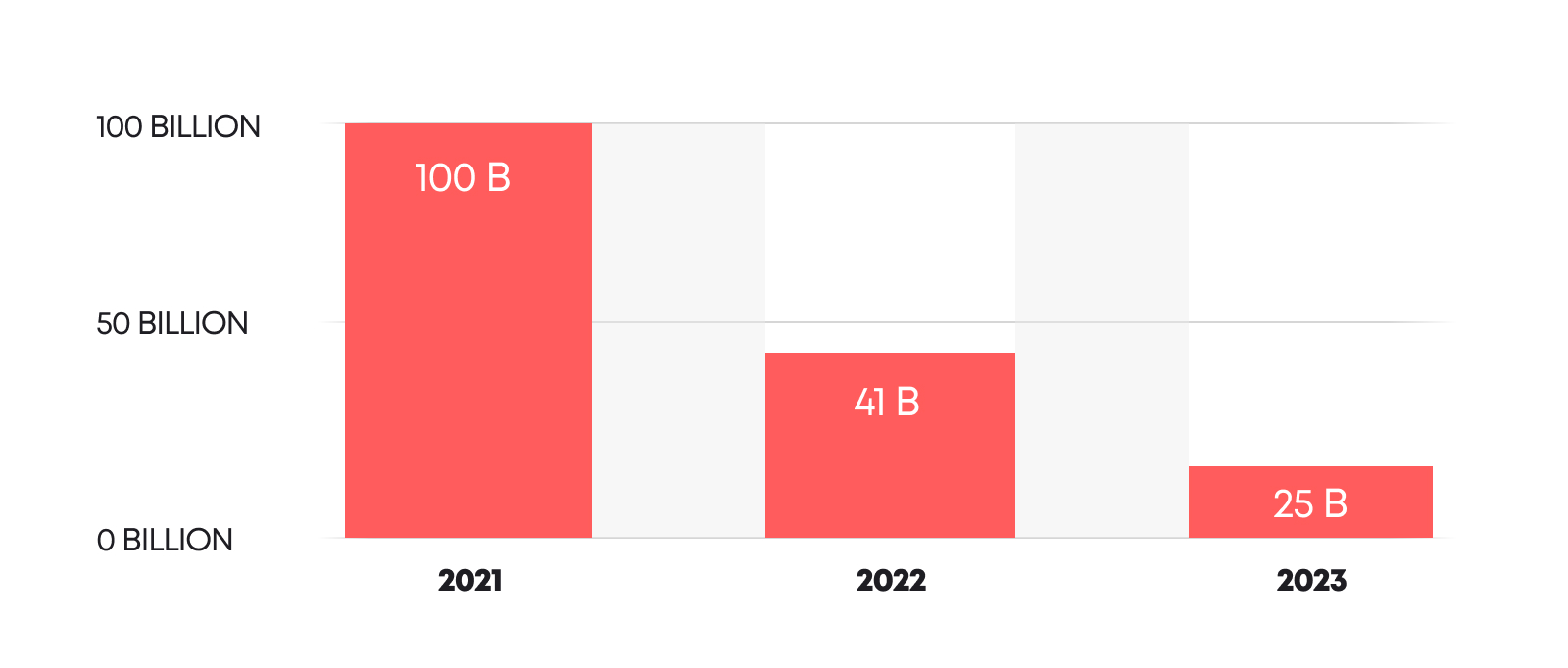
However, following this level of popularity and value, the NFT market experienced a noticeable decline. 2023 brought a sharp correction, with a volume of around $25 billion as macroeconomic challenges and market saturation dampened enthusiasm. This decline raised numerous questions about the sustainability and future of NFT art. At the same time, big players in the industry contemplate and expect the market rebirth.
At this point, you may have already come up with plenty of questions about the nature of NFT art marketplaces, and the reasons for the popularity gain and loss of NFT digital art. We’ve crafted this article to get them 100% answered! Let’s dive deeper into the intricacies of the topic of the digital market of art.
Why NFT Art Was in Decline?
The world of NFT art has dimmed considerably lately, prompting much soul-searching within the crypto community. While some maintain that the current downturn is a mere blip, others see it as a symptom of deeper flaws within the ecosystem. Let’s dissect the key factors that contributed to the decline of NFT art:
1. Crypto Winter: The broader cryptocurrency market has entered a bear phase, with Bitcoin and other major tokens plummeting in value. This has had a cascading effect on NFTs, particularly art, which was heavily reliant on speculation and FOMO during the bull run. With investor confidence shaken, the willingness to spend exorbitant sums on digital art has significantly waned.
2. Hype Exhaustion: The initial surrounding NFTs, fueled by celebrity endorsements and record-breaking sales, has subsided. The constant barrage of “get rich quick” schemes and rug pulls eroded trust and left many feeling burned. Additionally, the novelty factor has worn off, and the market is now saturated with derivative and uninspired pieces, failing to capture the imagination of collectors.
3. High Fees: Minting and trading NFTs on popular blockchains like Ethereum incur substantial gas fees, which can be prohibitively expensive for aspiring artists and casual collectors. This creates a barrier to entry, hindering wider adoption and stifling the organic growth of the art scene.
4. Lack of Real Utility: Many NFT art projects lack tangible utility beyond mere ownership of a digital token. While some offer access to exclusive communities or unlock certain in-game benefits, these features often feel tacked-on and fail to justify the inflated prices. The absence of intrinsic value makes it difficult for NFT art to compete with traditional art forms that offer aesthetic pleasure, historical significance, or investment potential.
5. Emerging Concerns: Environmental sustainability and ethical considerations have come to the forefront of the NFT conversation. The energy-intensive nature of some blockchains raises concerns about the environmental impact of minting and trading NFTs. Additionally, issues of plagiarism, copyright infringement, and potential manipulation of the market have cast a shadow over the industry.
6. Regulation Uncertainty: The regulatory environment for NFTs is currently marked by a lack of clarity and uniformity, creating a challenging situation for creators, consumers, and regulators alike. The absence of standardized regulations complicates the understanding of legal aspects, rights, and obligations associated with NFT ownership. This disjointed regulatory scenario acts as a major obstacle in establishing an all-encompassing framework that effectively protects the interests of all stakeholders in the NFT space.
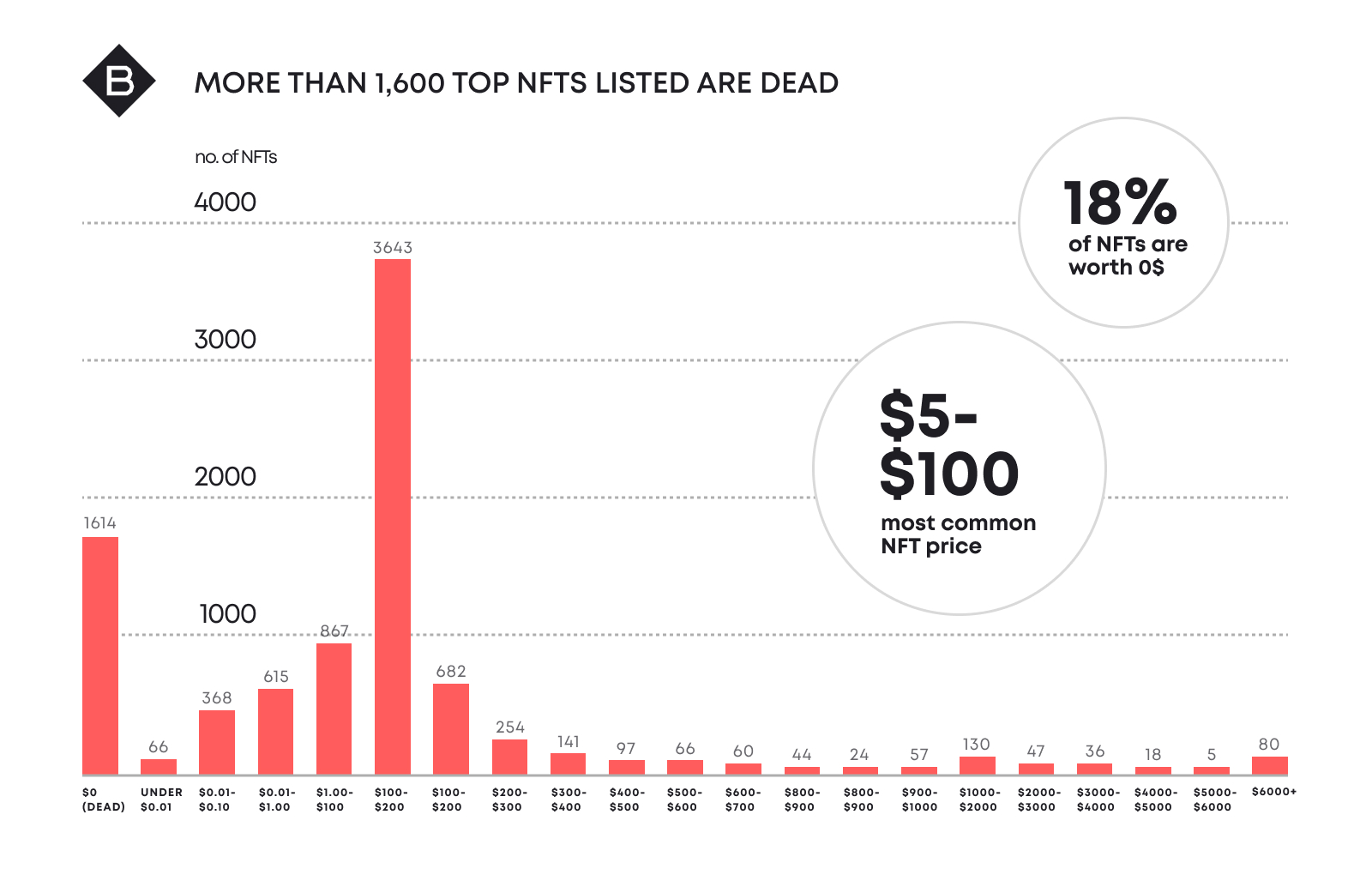
The mentioned decline revealed a striking finding about the NFT market. Among the 73,257 NFT collections analyzed, a staggering 95%, or 69,795 collections, held a market cap of zero ether. This analysis suggests that nearly 23 million individuals possess these assets, which currently hold no monetary value in the market.
The decline of NFT art presents a valuable opportunity for introspection and course correction. Addressing these challenges through innovative solutions, fostering genuine artistic expression, and establishing clear utility will be crucial to reviving the NFT art scene and reclaiming its potential as a transformative force in the art world.
At the same time, as mentioned above, despite the skepticism, the industry is beginning to be reborn and gain volume.
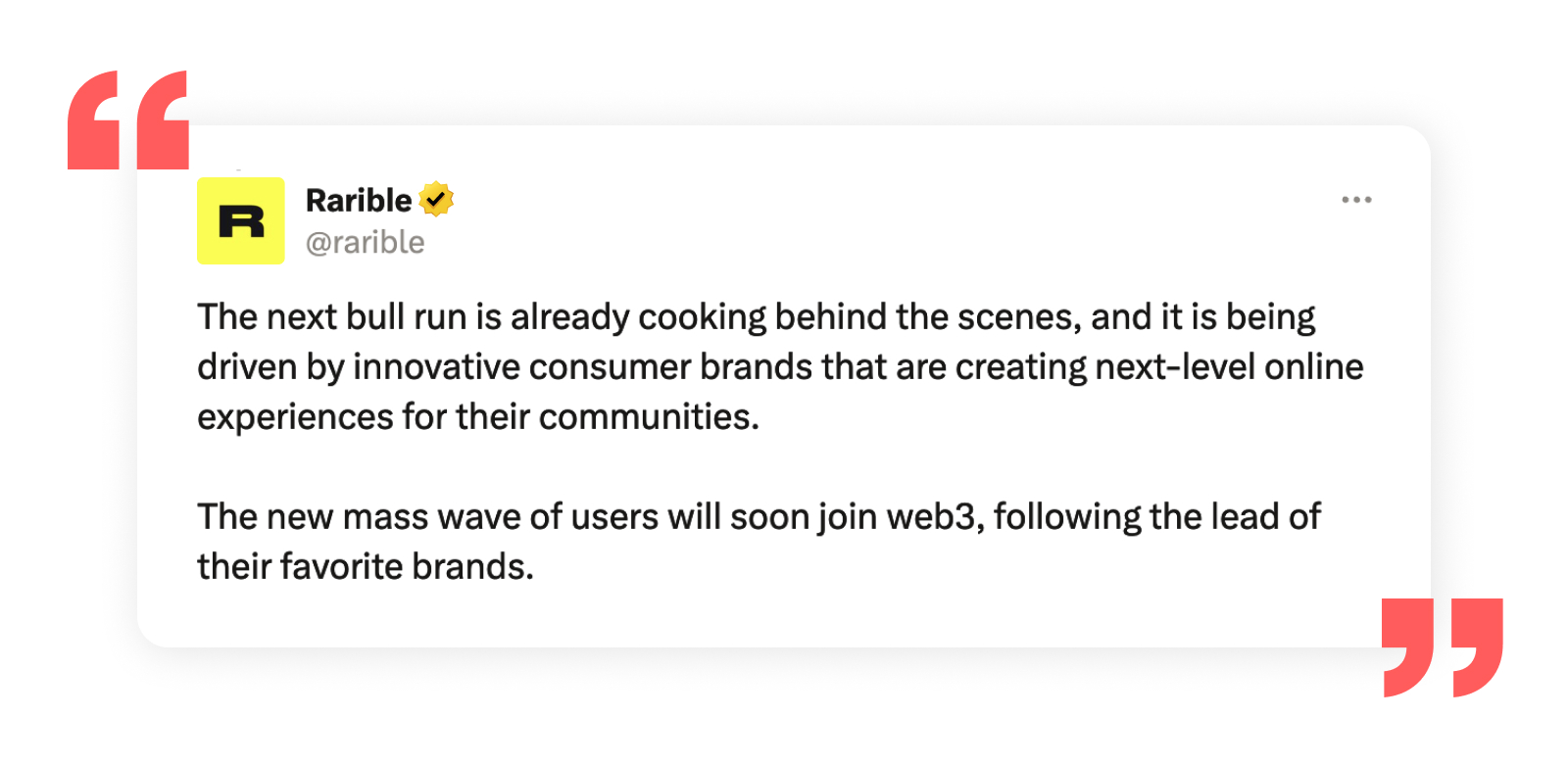
For instance, Sotheby’s has introduced a peer-to-peer marketplace for the secondary sales of digital art. This innovative platform, documenting transactions on Ethereum and Polygon blockchains, allows collectors to trade digital artworks directly.
Why NFTs are a Game-Changer for Artists, Galleries, and Art Collectors?
Unlike traditional digital art, which remains readily replicable, NFTs leverage blockchain technology to establish verifiable ownership and scarcity for digital creations. This innovation paves the way for a paradigm shift, impacting artists, galleries, and collectors in transformative ways.
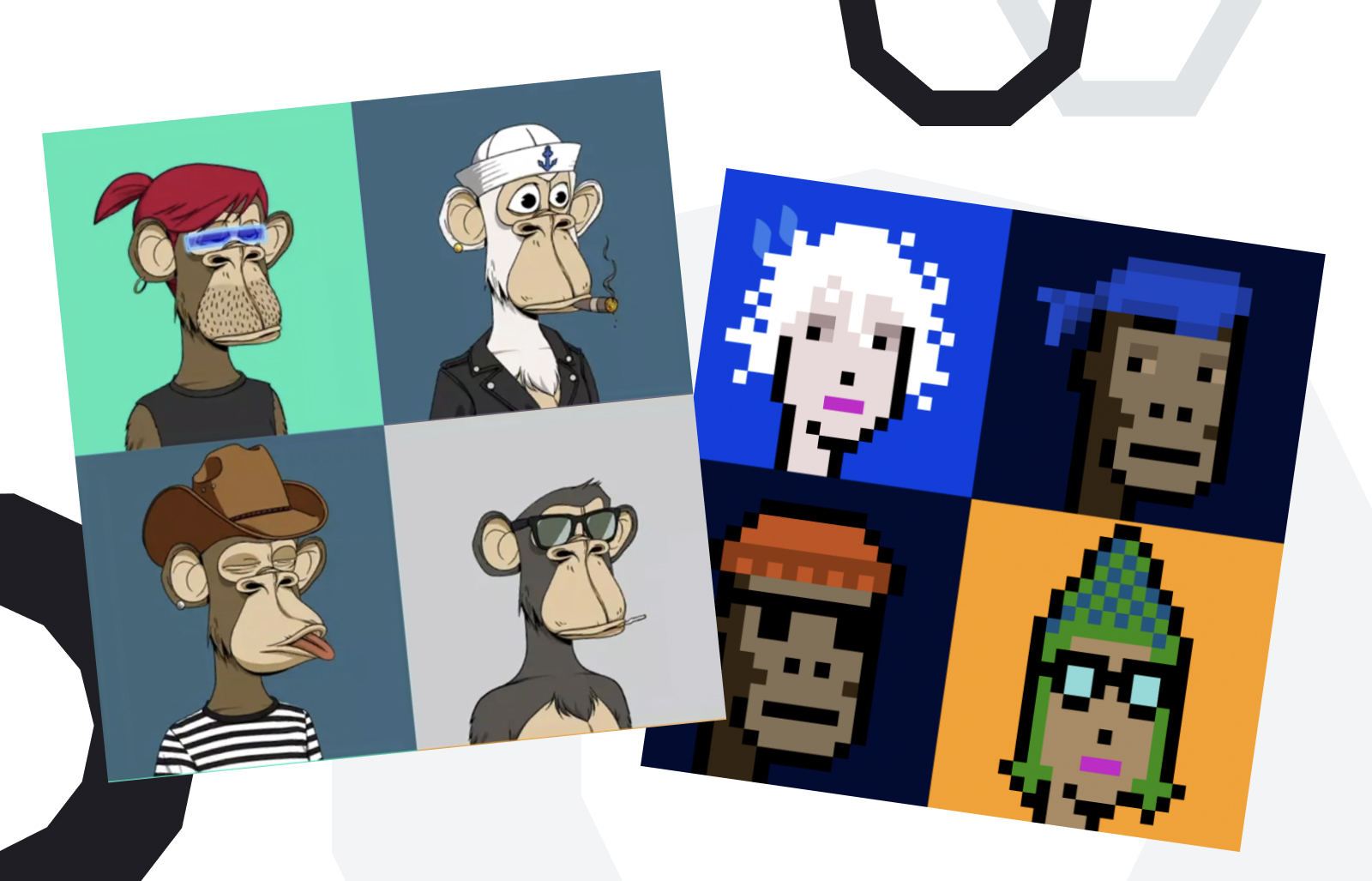
For artists:
- Democratized access: NFT art marketplaces bypass gatekeepers and offer artists, regardless of reputation or location, a global platform to showcase and sell their work directly to collectors. This empowers new voices to emerge and flourish, fostering a more diverse and vibrant art scene.
- New revenue streams: Artists can earn not only from initial sales but also from subsequent resales through built-in royalty percentages. This ongoing revenue stream provides financial stability and incentivizes continued artistic creation.
- Enhanced engagement: NFTs enable artists to connect directly with collectors, building deeper relationships and fostering a more engaged community. This interaction fuels artistic inspiration and provides valuable feedback, propelling artistic evolution.
For galleries:
- Diversification and expansion: Galleries can leverage NFT art marketplaces to expand their offerings beyond physical artworks, attracting tech-savvy collectors and entering new markets. This diversification mitigates risks and opens doors to exciting revenue streams.
- Curated experiences: Galleries can curate and showcase exceptional NFT art collections, acting as trusted tastemakers in the digital realm. This reinforces their reputation and attracts collectors seeking quality and authenticity within the vast NFT landscape.
- New forms of interaction: Galleries can host virtual exhibitions and interactive events involving NFT art, further blurring the lines between physical and digital experiences. This innovative approach enhances engagement and attracts a wider audience.
For art collectors:
- Ownership of the unique: NFTs provide verifiable ownership of digital art, eliminating the concerns associated with digital copies and reproductions. This grants collectors the thrill of collecting and investing in truly unique pieces.
- Fractional ownership: Fractional NFTs allow multiple collectors to share ownership of high-value artworks, democratizing access to exclusive pieces and fostering community investment.
- New engagement pathways: NFT art often unlocks exclusive experiences and benefits for collectors, such as access to artist communities, special events, or even future iterations of the artwork. This deeper engagement enriches the collecting experience and fosters a sense of belonging.
The development of robust NFT art marketplaces plays a crucial role in facilitating these transformations. Platforms that prioritize security, user-friendliness, and diverse art offerings will empower artists, galleries, and collectors to fully embrace the game-changing potential of NFTs.

NFTs are not simply a passing fad but a powerful catalyst for reimagining the art landscape. By enabling direct connections, empowering creators, and unlocking new ownership models, NFTs pave the way for a more inclusive, dynamic, and engaging art world, one pixel at a time.
Additionally, it’s important to note that collectibles also play a crucial role in the infrastructure of NFT marketplaces, underlining their significance in the digital asset economy.
Collectibles encompass a wide range of valuable items avidly pursued and acquired by collectors. These enthusiasts vary from traders seeking swift financial returns to crypto magnates with a passion for amassing diverse items. The spectrum of collectibles extends to, but is not confined to, categories like art, music, video clips, sports, and gaming.
Read more in Blaize’s article about how secure NFT development.
Where to Sell NFT Art In the Digital Landscape?
Aspiring NFT artists face a thrilling, yet sometimes bewildering, question: where to set up shop in the burgeoning digital art world? A plethora of platforms vie for their attention, each offering unique features and catering to specific niches. Let’s navigate the main options, comparing their advantages and drawbacks to help you choose the stage that best shines your artistic light.
1. Public Marketplaces: OpenSea and Blur
- OpenSea: OpenSea boasts a vast user base, diverse art collections, and established infrastructure. Its easy-to-use interface facilitates minting, listing, and sales for artists of all levels. However, the sheer volume of artworks can lead to discoverability challenges, and competition can be fierce for emerging artists. Fees, while lower than some, can still eat into profits.
- Blur: Emerging as a fierce competitor, Blur takes a different approach. This high-octane platform prioritizes efficiency and speed for seasoned traders, making it a haven for those seeking an edge in the fast-paced NFT market. Features like sweep and snipe allow quick purchases of multiple NFTs or execution of specific buy orders at optimal prices. This agility empowers professional traders to capitalize on fleeting market opportunities. Blur acts as a bridge, combining listings from across various marketplaces, including OpenSea and LooksRare. This grants users the widest possible selection and ensures they find the best price for their desired NFTs. The platform incentivizes participation with its native BLUR token. Users earn tokens for trading, liquidity provision, and other activities, creating a dynamic ecosystem that rewards engagement.
2. Specialized Marketplaces: Digital Basel and Beyond
- Digital Basel: Shifting focus from the masses to curated experiences, platforms like Digital Basel cater to high-end NFT art. These platforms invite artists through applications and rigorous selection processes, ensuring exposure to a targeted audience of discerning collectors. However, entry barriers are high, and competition to showcase can be intense.
- Niche Marketplaces: Platforms dedicated to specific art genres or communities are emerging, offering focused exposure and fostering a sense of belonging for artists and collectors alike. However, reach might be limited compared to broader marketplaces, and the long-term success of these niche platforms can be less certain.
The factors considered by the users when choosing the platform:
- Fees and royalties (platform’s fees and flexibility in royalty percentages)
- Community and curation (a supportive community or a platform built on artistic exclusivity)
- Technical ease (the comfortability in minting and managing NFTs)
For individuals and companies aspiring to establish their own NFT marketplace, the key to success lies in a multifaceted approach. Considering the dynamic nature of the NFT market, to succeed in the innovative domain, one should suggest the best conditions for the potential users of a platform from a financial as well as technical point of view.
Understanding the NFT Art Marketplace Landscape
The NFT art market teems with marketplaces, each a unique portal to artistic expression and passionate collecting. Let’s together take a closer look at which platforms are currently the most successful on the market and what are their technological peculiarities.
| Platform | Features | Fees | Specialization |
| Blur | Emphasizes fast trade execution, zero marketplace fees, and rewards for community participation. | Only gas fees apply, potentially making it cheaper for high-volume traders | Pro traders-focused, offering features like faster sweeping and multi-marketplace sniping |
| OKX NFT Marketplace | Supports trading NFTs across multiple blockchains, offers zero-fee trading events, and gathers listings from various marketplaces.Aggregates listings from popular marketplaces like OpenSea, LooksRare, and Magic Eden. | Zero fees for listing and standard marketplace fees. | Provides a comprehensive multichain marketplace experience with a focus on seamless NFT trading |
| OpenSea | Unrivaled diversity, user-friendly interface, powerful search and filtering, and vast user base. | Standard buyer transaction fee, optional tiered seller fees. | A broad spectrum of NFT art, catering to both established and emerging voices. |
| Element Market | Focuses on digital art, gaming, and collectible NFTs, offering a user-friendly platform for creators and collectors.Artists need to be invited or apply to join the platform. | The marketplace fees are standard, while the creators may settle their royalty fee size. | Specializes in a wide range of NFTs including art, and gaming, and collectibles, catering to diverse interests |
| Rarible | Lower fees, customizable royalties, artist empowerment, growing user base. | Minimal buyer transaction fee, optional custom seller fees. | Encourages artistic exploration and fosters a strong community vibe. |
For individuals and companies looking to venture into their own NFT marketplace and digitize their art business, understanding the ever-evolving NFT art market is crucial. This market is rapidly expanding, with specialized platforms catering to distinct art styles, specific regions, or particular social causes gaining prominence. They offer targeted exposure and create tight-knit communities.
Be mindful of the various fee structures and royalty arrangements across platforms, as these can have a significant impact on your financial outcomes. It’s important to weigh the benefits of lower fees against the potential for broader exposure.
While navigating established platforms offers valuable insights, there’s another possibility to consider. Here at Blaize, we recognize the desire for a bespoke experience. We envision crafting an NFT art marketplace tailored to your specific requirements and needs, meticulously woven with features and functionalities that are essential for potential visitors and users of a platform.
With our commitment to the highest web3 security standards, you can rest assured that your creations will flourish in a safe and secure environment. This isn’t just a marketplace; it’s a blank canvas, ready to be painted with your unique vision.
So, explore the existing avenues, discover new paths, and don’t hesitate to dream beyond the boundaries.
Blaize stands beside you, ready to help you build your ideal NFT art haven – contact us here.
Case Studies
The burgeoning NFT art scene boasts a plethora of projects and marketplaces capturing the public imagination and redefining the art world. Let’s delve into real-world examples that illuminate the diverse paths to success, offering valuable insights for artists, collectors, and platform developers alike, backed by hard-hitting numbers and metrics.
1. Blur
Blur is a leading NFT marketplace specializing in premium digital art. Launched in October 2022, it’s already amassed over $1 billion in monthly trading volume. This high-octane market prioritizes efficiency and speed for seasoned traders. Blur’s focus on streamlining transactions and maximizing speed resonates with high-volume traders seeking an edge in the fast-paced NFT market.
Case highlights:
- Advanced Bidding Tools: Blur boasts features like sweep and snipe that allow users to instantly purchase multiple NFTs or execute specific buy orders at optimal prices. This agility is a boon for professional traders seeking to capitalize on fleeting market opportunities.
- Liquidity Aggregator: Blur acts as a bridge, combining listings from across various marketplaces, including OpenSea and LooksRare. This gives users the widest possible selection and ensures they find the best price for their desired NFTs.
- BLUR Token Rewards: The platform incentivizes participation with its native BLUR token. Users earn tokens for trading, liquidity provision, and other activities, creating a dynamic ecosystem that rewards engagement.
2. OKX NFT Marketplace
OKX NFT Marketplace casts a wider net, catering to a global audience looking to trade a diverse range of NFTs. With support for over 10 blockchains, including Ethereum, Solana, and BNB Chain, it boasts one of the most comprehensive selections of any platform. This global reach is further enhanced by its integration with a fiat gateway, allowing users to buy and sell NFTs directly with USD, EUR, and other fiat currencies.
Case highlights:
- Secondary Market Aggregation: Similar to Blur, it aggregates listings from other popular marketplaces, providing users with a single interface to access a vast pool of NFTs.
- Flexible Fee Structure: Sellers can choose to pay zero listing fees or opt for a 2% fee for additional promotion. This allows users to tailor their experience based on their needs.
3. Element Market
While Blur and OKX cater to large-scale trading, Element Market takes a different approach. This platform values quality over quantity, prioritizing curated collections and individual artist showcases. To ensure a high standard, artists need to be invited or apply to join the platform, fostering a sense of exclusivity and community.
Case highlights:
- Community-Driven Curation: The platform leverages a curation board comprised of artists, collectors, and community members to identify and showcase emerging talent and high-quality artwork.
- Flexible Royalties: Artists have the freedom to set their own royalty fees, ranging from 2.5% to 10% on secondary sales. This empowers creators to capture a larger share of the value they create.
These case studies paint a diverse picture of what constitutes success in the NFT art world. While artistic merit, community building, and strategic marketing play crucial roles, the landscape remains dynamic and evolving. Remember, innovation, experimentation, and a deep understanding.
How to Build a NFT Digital Art Marketplace
The emergence of NFTs has revolutionized the digital art world, offering artists and collectors a new platform for showcasing and trading unique digital assets. As the demand for NFT marketplaces grows, understanding the intricacies of building such a platform is crucial.
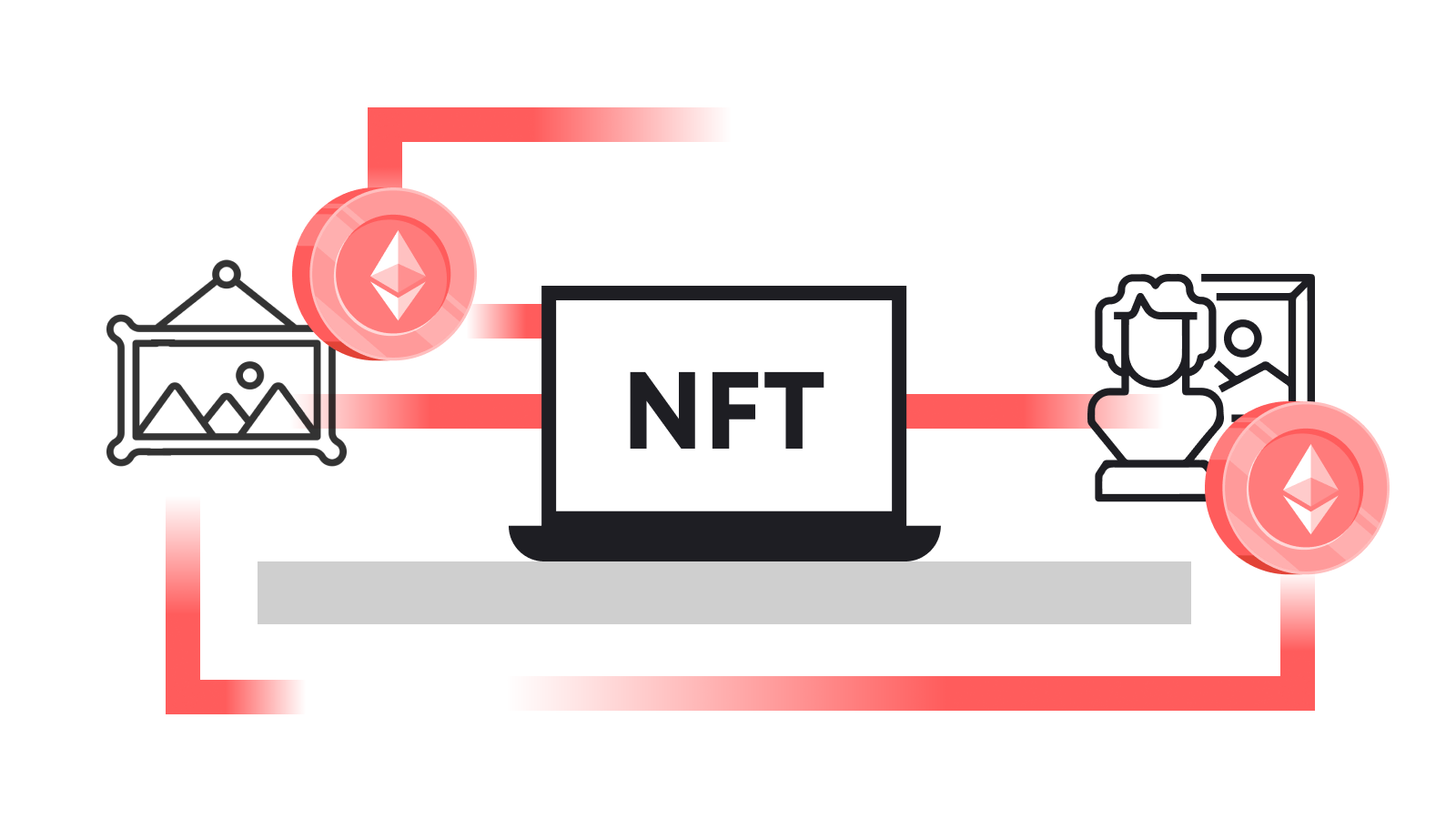
This section delves into the essential technical aspects of creating an NFT digital art marketplace. From defining your goals and audience to implementing advanced security measures, each point is crafted to guide you through the complex yet rewarding process of developing a marketplace that stands out in the burgeoning world of digital art. Let’s explore these key elements to ensure your marketplace not only meets but exceeds the expectations of today’s digital art community.
1.Defining Goals and Target Audience
- Conduct market research to understand the unique demands of the digital art community.
- Create user personas representing typical artists and collectors to tailor features and marketing strategies.
- Analyze competitors to find a unique value proposition for your marketplace.
2.Developing Smart Contracts
- Design contracts to handle complex transactions, royalties, and copyrights.
- Ensure they are flexible to accommodate future changes in marketplace rules.
- Regular audits and updates for security and efficiency.
3.Designing User-Friendly Interface
- Utilize UX/UI best practices for ease of use and aesthetic appeal.
- Conduct user testing to gather feedback and iteratively improve the interface.
- Ensure accessibility for all users, including those with disabilities.
4.Focusing on Efficient Royalties Systems
- Integrate diverse cryptocurrency payment gateways to ensure broad accessibility for royalty transactions.
- Employ secure, multi-signature wallet systems to guarantee the safety of royalty disbursements.
- Continuously update the royalty distribution systems to support new cryptocurrencies.
5.Enabling NFT Minting and Listing
- Develop clear, step-by-step guides for artists new to NFTs.
- Include features for digital rights management within the minting process.
- Offer customizable settings for royalties and resale rights.
6.Implementing Robust Security Measures
- Incorporate advanced cybersecurity measures like SSL encryption, DDoS protection, and regular security audits.
- Set up continuous monitoring systems for detecting and responding to threats in real-time.
- Provide user education on safe practices within the platform.
7.Rarity and Authenticity Verification
- Integrate advanced blockchain analytics to verify the history and uniqueness of each NFT.
- Partner with art experts for additional verification of digital art pieces.
- Implement a transparent process for reporting and removing counterfeit items.
8.Fostering Community and Engagement
- Create forums and social features for users to interact and share insights.
- Host regular online events like artist AMAs, webinars, and digital art contests.
- Integrate social media platforms for broader community engagement.
9.User-Friendly Auctions and Bidding
- Implement features like auto-bidding, reserve prices, and time-extension for last-minute bids.
- Offer real-time notifications and updates on auction progress.
- Provide detailed guides and support for first-time bidders.
By meticulously addressing each of these aspects, your NFT digital art marketplace can cater to the sophisticated needs of the modern digital art market, ensuring a secure, user-friendly, and community-driven platform.
Read Also: Blaize’s comprehensive guide on developing your own NFT platform.
One of the primary challenges in NFT marketplace development is the creation and implementation of a royalty system for creators. This complex task requires careful consideration and technical expertise, and resources like OpenZeppelin can be consulted for best practices in this area.
Additionally, it’s essential for the marketplace’s sustainability and user engagement that its operation is cost-effective. This includes minimizing transaction fees to ensure affordability for users. Another vital aspect is the development of engaging user activities, such as lotteries and flips, which are crucial for enhancing user experience and maintaining active participation on the platform. These elements, when thoughtfully integrated, can significantly contribute to the success and longevity of an NFT marketplace.
Why Blaize for Digital Art NFT Marketplace Development?
Blaize has demonstrated its expertise in NFT marketplace development through its successful collaboration with RAD, a platform revolutionizing global streaming with Web 3.0 solutions. Our task was multifaceted: we crafted an NFT Browser and Marketplace, implemented a liquid staking program, and integrated NFT-related content into RAD’s streaming platform.
Our Agile development process, featuring a skilled team including a Project Manager, Team Leader, Frontend and Solidity developers, and a Quality Assurance Engineer, enabled us to overcome challenges like developing a fast, responsive NFT Browser. We achieved this through innovative solutions such as frontend caching and a gateway backend solution, ensuring a seamless user experience.
The successful development and launch of the NFT Browser and Marketplace, coupled with the integration into RAD’s live platform, underscore Blaize’s capability to deliver custom NFT marketplace solutions that are both technically robust and user-centric. Our experience with RAD showcases our ability to handle complex projects and deliver solutions that meet the unique needs of clients in the digital art NFT marketplace domain.
Discover more details about RAD case here.
Closing Remarks
Our journey through the world of NFT art has revealed diverse threads: captivating creations, passionate communities, and innovative marketplaces. While challenges remain, the underlying potential of this transformative art form shines through. The insights that emerged after reading this article include the following:
- NFT art empowers artists with direct access to collectors, democratizing the world and fostering new financial horizons.
- Robust marketplaces act as crucial bridges, offering platforms tailored to specific needs and artistic styles.
- Community building lies at the heart of success, with curated drops, exclusive clubs, and shared experiences fueling passion and engagement.
- Artistic merit, strategic marketing, and a deep understanding of the audience remain guiding lights for navigating the ever-evolving landscape.
- Artists are liberated from financial limitations, unleashing their creative potential on the digital canvas.
- Collectors experience art in transformative ways, engaging with dynamic pieces and vibrant communities.
- Platforms evolve into hubs for artistic discovery, cultural exchange, and social impact.
We’ve explored the dynamic realm of NFT art and its marketplaces, the potential for growth and innovation in this sector is immense. If you’re inspired to build your own NFT marketplace, Blaize offers the expertise and technical know-how to bring your vision to life. With a deep understanding of the NFT landscape and a commitment to custom solutions, Blaize is the ideal partner to help you navigate this exciting digital frontier.
Contact Blaize to create a mainstream NFT marketplace for your project.
